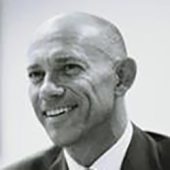4 Ways to Avoid Personality Mismatch when Hiring

Assembling a senior team that really complements one another is one of the biggest challenges facing any CEO or business leader. After all, your fellow senior executives must lead and inspire their own teams effectively, while this mix of personalities also needs to work together seamlessly to consistently achieve great results for your business overall, including dealing with difficult strategic issues that will determine the long-term future of the business.
Getting this mix wrong can conversely have a disastrous impact on the performance of your organisation. Interestingly, research I recently read indicated that personality mismatch was far and away the main reason behind unsuccessful hires, accounting for 81 percent of failures. That’s a remarkable statistic so it’s worth exploring why this goes wrong so often.
I’m proud to say that my senior team here at Hays is the best I’ve ever worked with, not only because it comprises of people with world class technical or operational skills, but also because we have personalities that complement each other so well. This absolutely does not mean we are all the same or come to unanimous decisions all the time. Quite the opposite in many ways.
[bctt tweet=”Research has shown 81% of unsuccessful hires is due to personality mismatch, so what can you do?” username=”ATCevent”]
However, it does mean that we challenge, support and inspire each other when we need to. As a result we take better business decisions, even when those decisions are difficult. Crucially, the team understands when and how to do this. Above all, binding this unit together is absolute clarity that we are all driven by the same beliefs and values of our business. Our agenda is common, even though our individual ways of getting there may differ. That recognition that ultimately we all want to achieve the same things allows us to cut through a lot of the noise and politicking that I see elsewhere.
Establishing a team with these dynamics does not happen by accident. It requires a lot of thought and soul-searching about what you, as leader, need around you to run the business to maximum effect. This is your decision and your decision alone and maybe the most important step you take. Get it right and a whole world of exciting but unpredicted opportunities open up. Get it wrong and both you and the business could find life a struggle. So where to start to put the pieces together?
As with anything in life, proper preparation cannot be short-circuited if you want to achieve a good result, so make a very honest assessment of what you want (and why) before seeking it out. Then use the interview process as your key tool to determine the candidate’s fit with your business.
During the interview process, most people assess a candidate’s technical ability to do the job and clarify aspects from the CV. Many will then move onto a candidate’s motivation for the role and evaluate those all-important soft skills. However, I also consider assessing the character and personality traits of any new hire (regardless of their seniority) just as important during the recruitment process.
Undoubtedly, this is ultimately an exercise of instinct – unfortunately, it isn’t a straightforward process that can be taught. However, there are some tactics I commonly use that work for me, so maybe they will enable you to better assess a prospective candidate’s personality ‘fit’ for your business:
 Know who your organisation is
Know who your organisation is
Shockingly, a recent Deloitte report found that only 28 percent of senior leaders sufficiently understand their own company’s culture. It’s very hard to hire the right personality fit for your business if even those at the very top are unsure of what you stand for as a business.
In order to be successful, you need people who are motivated by and completely aligned with your organisation’s personality – your system of values, beliefs and behaviours. I therefore cannot emphasise enough the need for you and your senior team to take a step back and make an honest assessment of what your company culture really is and should be.
Do not fall into the trap of describing your company’s culture in terms of meaningless platitudes that, frankly, could be used to describe any organisation. You yourself have a unique and distinctive personality that sets you apart from every other human being on earth and you should be able to write that down. If you can therefore do it for yourself, you should be able to do it for your business as organisations have personalities too.
Only by truly understanding this can you then gauge how well you are doing against your own standards and equally, become able to gauge how well any prospective candidate will fit into your world. You should also reiterate your values fully in any job description and other touch points, as many unsuitable candidates will likely screen themselves from the process before applying.
 Spot the gaps in your team
Spot the gaps in your team
You’ll only be able to identify the right candidate once you objectively and honestly recognise the strengths, weaknesses and traits of the team you expect them to join.
Does your team need someone able to maintain a calming influence, or instil a sense of urgency? Someone who can put in place rigorous processes or someone who can bring creative ideas?
Sometimes personality assessment tools can help in the process because they can illuminate where an individual may be coming from and how they react to issues. Too much of the same traits across the team may result in group-think and that is the death knell for innovation. Too many wildly diverse traits may result in group breakdown unless it is recognised how best to handle these different viewpoints. I do not think you should base your entire decision on these tools but they do provide extra guidance to support your final, instinctive assessment.
My own advice – beware of building a senior team too similar to one another. Innovation thrives on the diversity of ideas and a truly dynamic leadership team that inspires profits and productivity will contain a mixture of personalities that approach challenges in different ways. The trick is getting the team to work well together, given that each individual may well see the world through a radically different lens. A natural reaction is to disengage when you fail to see why someone looks at a problem differently than you do. “I am right and you are wrong and that’s that”. A better reaction is to recognise your colleague sees it in a different way and try to understand what they see that you don’t, and why.
Ultimately it is your job as their leader to bring the power of this diversity of views to the table and to collectively move the issue forward. Harness this well and you can unleash something really special. Fail to recognise and manage it and I suggest your team probably will not last long.
 Chemistry matters
Chemistry matters
As a leader, you’ll need to work cohesively with your senior team and you’ll also need them to gel with their own staff effectively. A candidate who can commit and contribute to a free-flowing conversation with you – even with pre-interview small talk – can often establish a good rapport with colleagues. It’s never a good sign when an interview veers more towards interrogation than conversation. It’s also important for you to let your guard down and allow your own personality to shine through.
The interview process is a two-way street and the prospective candidate should be given the opportunity to make their own assessment on how well their personality might fit with yours and the organisation’s.
Remember, you are trying to work out whether you want to work with this person. They should be doing exactly the same about you!
 Utilise existing networks
Utilise existing networks
Existing employees should already embody your business’ values and be a match for your company culture, so promoting from within is often the best way forward, as the candidate who best suits your business may already be on your doorstep.
Ensure you have clear internal communication around open roles. Asking team leaders for recommendations from within their own teams will give them an element of ownership over the process and also reduces the risk of sourcing an ill-suited candidate. If looking within draws a blank, then ask leaders to reach out to their external networks and seek recommendations from past colleagues who they feel emulate the personality characteristics you are looking for. Referrals are always a powerful way of hiring the people you need.
[bctt tweet=”Assessing candidate personality is not exact science but there are ways to make it work effectively. ” username=”ATCevent”]
Unfortunately, time and time again, one of the most common reasons that new hires don’t succeed in a role is because their personalities simply don’t fit the organisation and they are not aligned to the company culture. This rate of failure costs businesses dearly and the fallout increases when this happens at the senior management level.
I strongly believe that building a team consisting of people who complement one another in terms of skill, experience, style and approach – and the staff they manage – is one of the most crucial challenges facing any CEO. In building this team, there are risks and sometimes it can go wrong. However, there is still a lot that can be done upfront to try and mitigate these risks and it is worth working very hard to get it right. The rewards of doing so far outweigh the effort.
Image: Shutterstock
This article first appeared on LinkedIn Pulse on April 26th, 2016.
Related articles
Leave a Reply
Sign up to our newsletter
Get a weekly digest on the latest in Talent Acquisition.
Deliver this goodness to my inbox!


